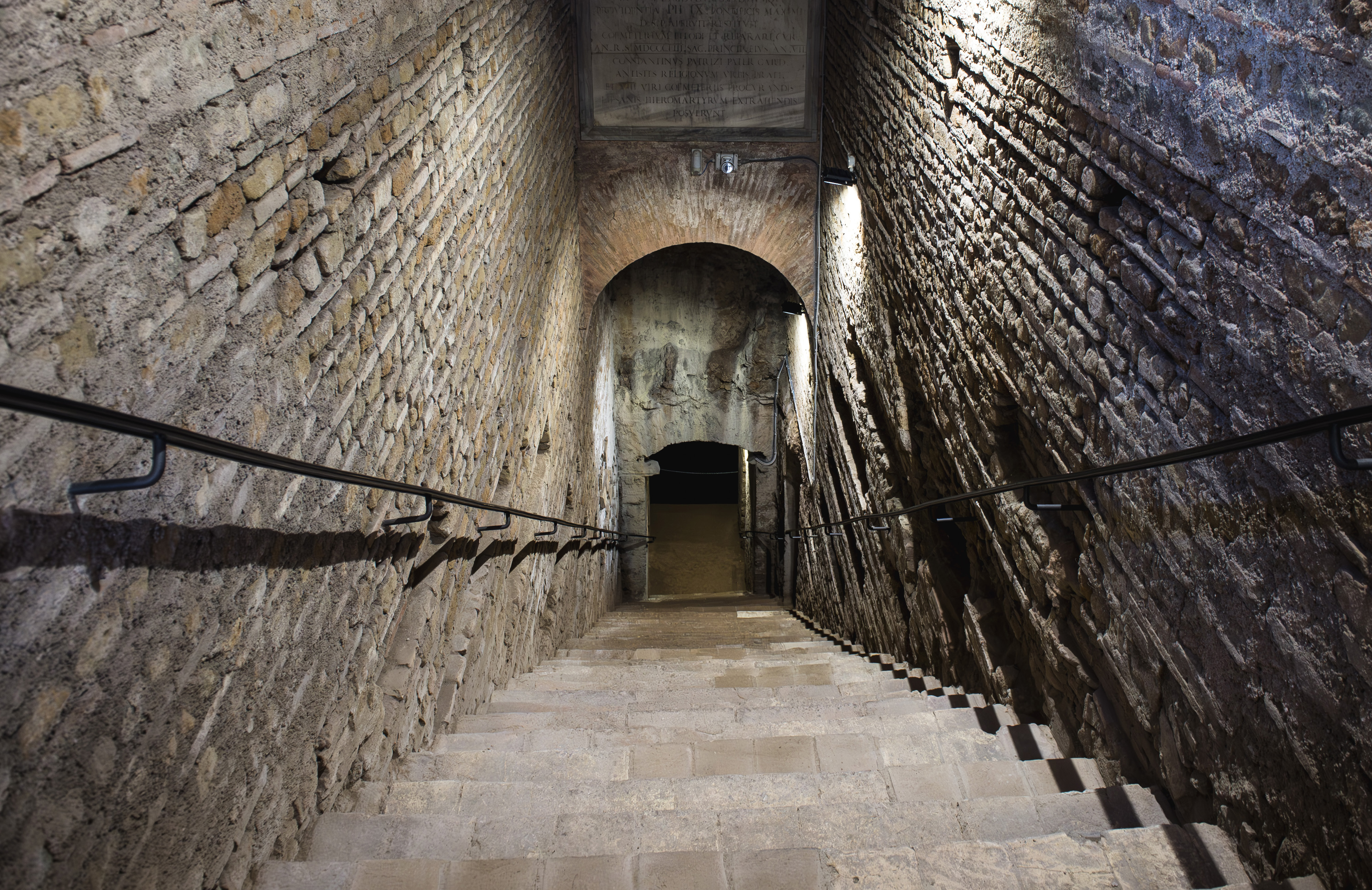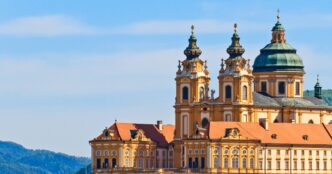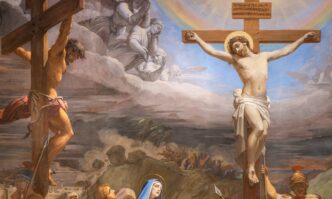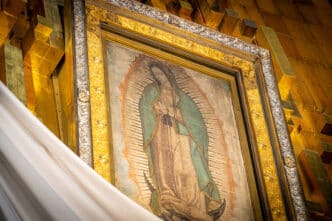This article first appeared in Our Sunday Visitor magazine. Subscribe to receive the monthly magazine here.
During this Jubilee Year, millions of pilgrims will visit Rome and marvel at its gilded churches, charming piazzas and glistening fountains. Yet, the grandeur above ground is only the peel of the pomegranate, you might say. Beneath the cobblestone streets lies a hidden world — a vast, layered history of Christian faith going deep into the belly of the earth. This subterranean realm, composed of ancient catacombs, crypts and buried basilicas, descends as many as four or five stories in some places, preserving the sacred traditions and legacy of early believers. We invite you to join us on a journey to explore a few of the hidden treasures of underground Rome.
Santa Cecilia in Trastevere
Nestled within the charming district of Trastevere, the Basilica of Santa Cecilia stands as a testament to the unwavering faith of the patroness of musicians, virgin and martyr St. Cecilia. Celebrated for her chastity, perseverance and charity, the third-century saint refused to deny her faith in Christ upon pain of death. The local governor sentenced her to terrible physical tortures, yet she bravely endured while joyfully singing praises to the Lord in her heart.
Beneath the popular ninth-century basilica lies a silent underground realm — remains of structures occupied from the second to fourth centuries, now a crypt that contains the relics of St. Cecilia and her husband, St. Valerian.
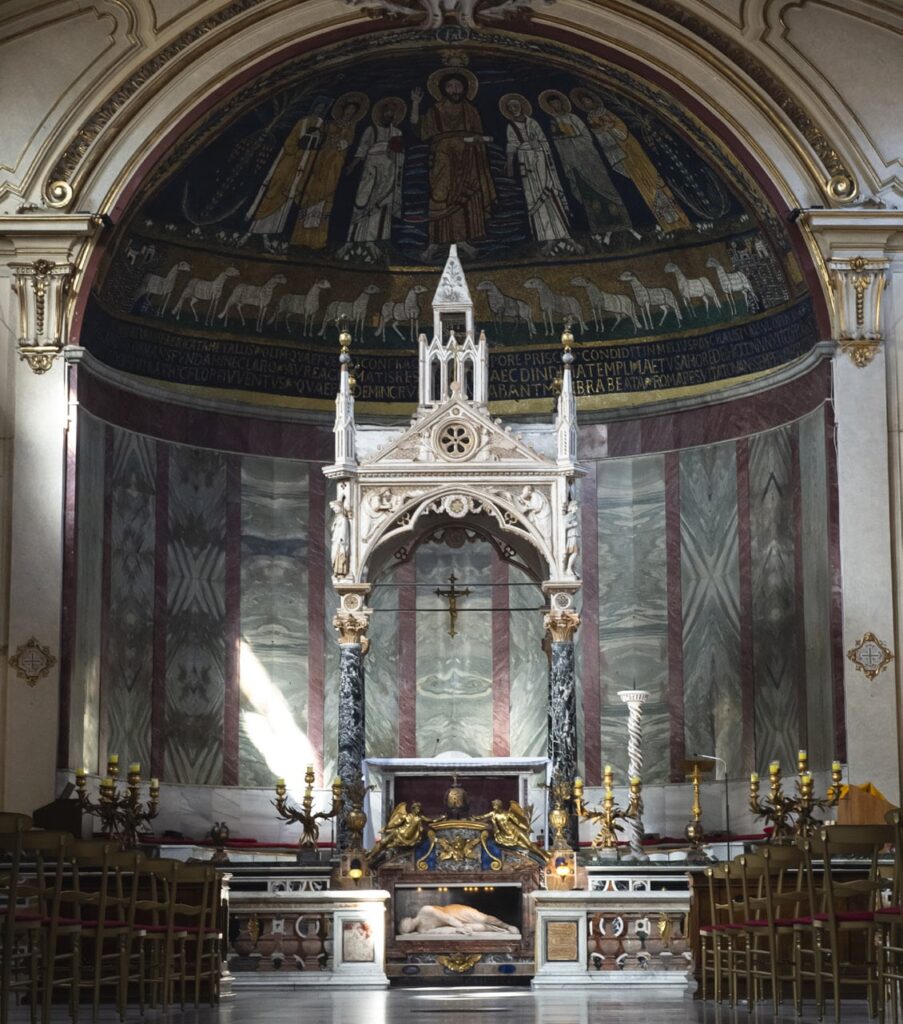
The lower level is accessible through a small room behind the left aisle of the basilica. Each step down the modest staircase transports visitors back to the early days of Christianity.
Tradition holds that part of the subterranean structure would have been a section of St. Cecilia’s family home. It also contains what is said to be the very stone where her blood was spilled.
In the fourth century, various walls and structures in that area were consolidated into a single building to form an early Christian domus ecclesia (house church) dedicated to the great saint. Updates around 1900 saw the addition of mosaic-adorned chapels in honor of virgin martyrs Sts. Cecilia and Agnes.
San Clemente
Layered like an Italian nonna’s Sunday lasagna, San Clemente is a vertical timeline passing through layers of Rome’s religious and architectural transformations, from the first century to the present.
Far underground, the deepest layer reveals remnants of first-century Roman structures. Among these are a domus (private residence) and an adjacent mithraeum, a sanctuary dedicated to the Persian god Mithras, pointing to the presence of the mystery cult of Mithraism in ancient Rome. A mithraeum was typically crafted to resemble a cave or cavern and was used to initiate new members into the Mithraic cult.
The design features a basic central nave with crude benches along the side walls and a central altar bearing a relief of Mithras slaying a sacred bull, a common motif in Mithraic worship.
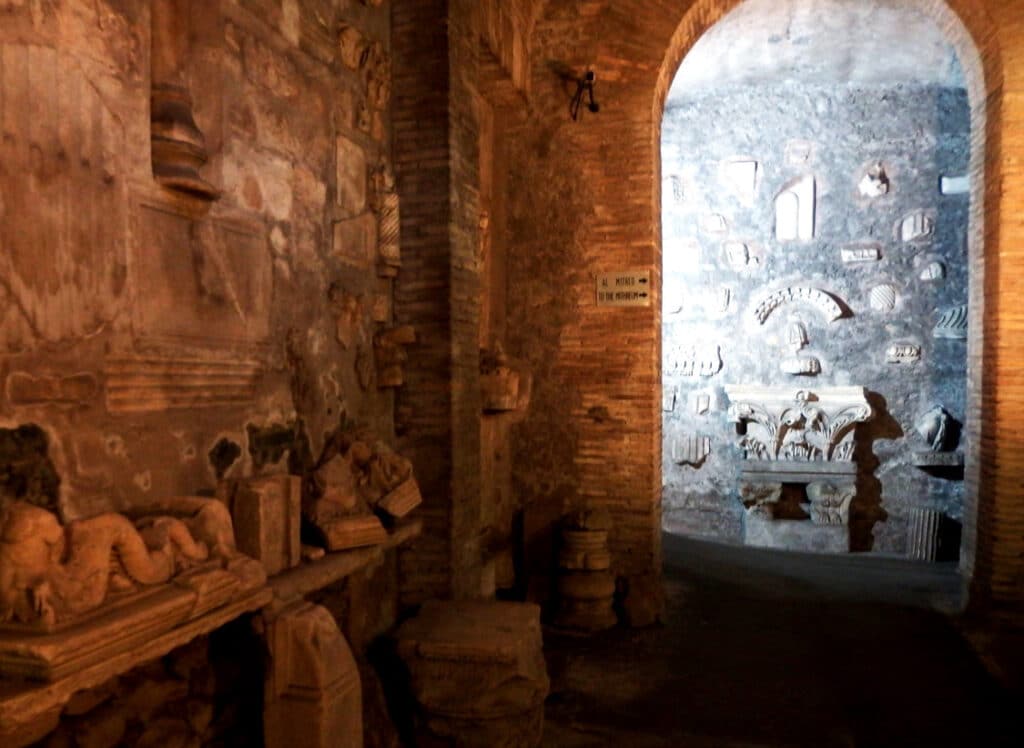
In the fourth century, a Christian basilica was built directly on top of the obsolete first-century Roman structures. The basilica offers insight into early liturgical practices and art, with its frescoes illustrating scenes from the Old and New Testaments, along with depictions of the life of Pope St. Clement I, the third successor of St. Peter.
The basilica is laid out with a central nave and side aisles, reflecting the architectural style of ancient Roman basilicas, or civic buildings.
Back on present-day street level, you’ll be captivated by the glittering mosaic in the central apse of the upper basilica, which dates back to the 12th century.
San Callisto Catacombs
Established around the mid-second century between the great Appian Way and Via Ardeatina, these catacombs (just one of over 60 catacombs in Rome) served as an official cemetery for the Church of Rome in the third century, when Pope Zephyrinus entrusted the building and administration of the cemetery to the Deacon Callixtus.
The underground structure encompasses approximately 90 acres with a network of galleries about 12 miles long, spread over four levels. It contained more than 500,000 bodies, including numerous martyrs, 16 popes and countless faithful. The galleries form a labyrinth of tunnels, with sections still being explored today. They are filled with loculi (burial niches), arched crypts and small chapels.
The frescoes and symbols adorning the walls, like the image of Jonah being thrown from the mouth of the sea creature, serve as a miniature Gospel, encapsulating the core tenets of early Christian belief in Christ’s words, “I am the resurrection and the life. Those who believe in me, even though they die, will live” (Jn 11:25).
St. Lawrence Outside the Walls
This basilica offers a solemn underground experience steeped in Church history, spirituality and archaeology. One of the seven pilgrimage churches of Rome, it honors St. Lawrence, the deacon martyr who gave his life for Christ in 258. In a final act of fortitude, Deacon Lawrence presented the poor and needy to the Roman authorities, naming them as the true treasures of the Church. For this, he was sentenced to be grilled to death, but not before uttering the famed words, “Turn me over, I’m done on this side,” as the flames licked his body.
For centuries, pilgrims have come here to venerate the remains of this courageous (and quick-witted) martyr. As you follow their steps down into the crypt, you are surrounded by the faint scent of aged stone and earth.
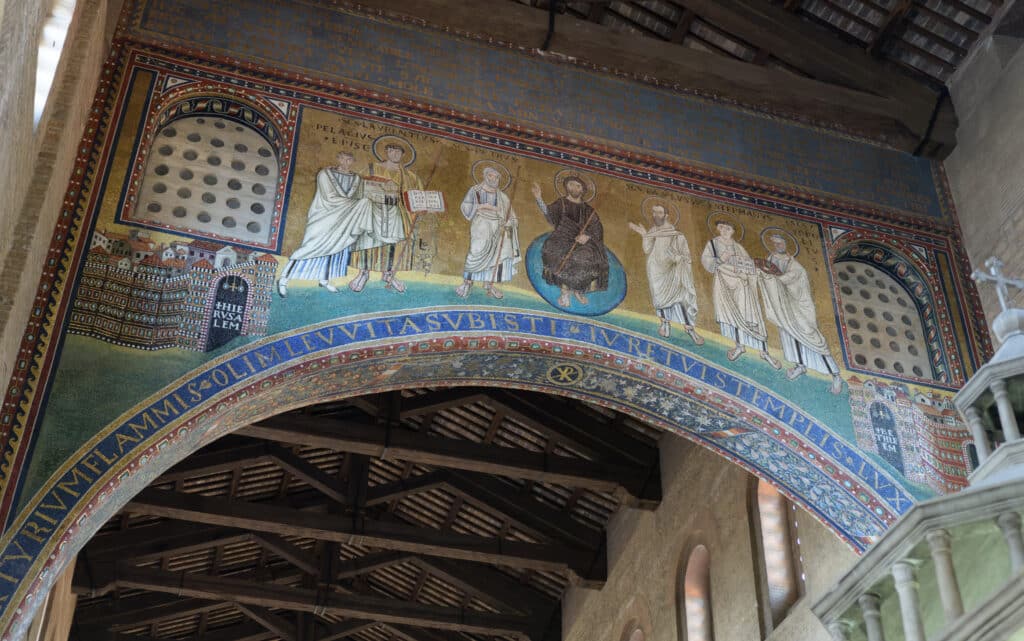
Remains of St. Stephen, the Church’s first martyr, are contained in the same tomb. In the underground area, you’ll also find the tomb of Blessed Pope Pius IX, the longest-reigning pope, who wished to be buried here among the faithful. The area also hosts ancient Christian tombs from the third and fourth centuries, some with faint frescoes and inscriptions that provide a glimpse into early Christian burial traditions.
In addition, parts of the original fourth-century church, commissioned by Emperor Constantine, can still be seen below ground.
Domitilla Catacombs
Located along the ancient Via Ardeatina, this catacomb is one of the most extensive and well-preserved underground burial sites in Rome. It was named after St. Flavia Domitilla, a noblewoman and granddaughter of Emperor Vespasian who was banished to Pandateria for clinging to her Christian faith.
Its tunnels stretch over 10 miles and descend four levels underground. Descending into the catacombs, visitors enter a maze of dimly lit, narrow tunnels lined with ancient burial niches. Some still bear inscriptions like fish and anchors and contain faint frescoes, such as a striking second-century depiction of Jesus and the Apostles, one of the earliest known images of the Last Supper.

Uniquely, the Catacombs of Domitilla house an underground fourth-century basilica named for a pair of Roman soldiers executed for their Christian faith, Sts. Nereus and Achilleus. To this day, you can see frescoes and an altar where liturgies were once held.
Vatican Necropolis
Beneath the majesty of St. Peter’s Basilica lies an ancient necropolis known today as the Scavi, Italian for excavations. This has been the main destination for pilgrims coming to Rome since the first century.
Guided by Vatican experts (access is strictly controlled), visitors walk along a narrow path through the necropolis (city of the dead), passing the remains of an ancient Roman cemetery on the way to a tomb believed to be that of St. Peter himself. This necropolis was originally a pagan burial ground, with mausoleums, sarcophagi, Latin inscriptions and intricate frescoes still intact, showing the transition from pagan to Christian funerary rites and symbols.
At the heart of the necropolis rests a small, simple niche containing bones that Pope St. Paul VI declared in 1968 were likely those of the apostle Peter, the rock upon which Christ built his Church (Mt 16:18). This fisherman from Galilee, who professed his faith with the words, “You are the Messiah, the Son of the living God” (Mt 16:16), ultimately gave his life for that truth, crucified upside down in the center of Emperor Nero’s circus.
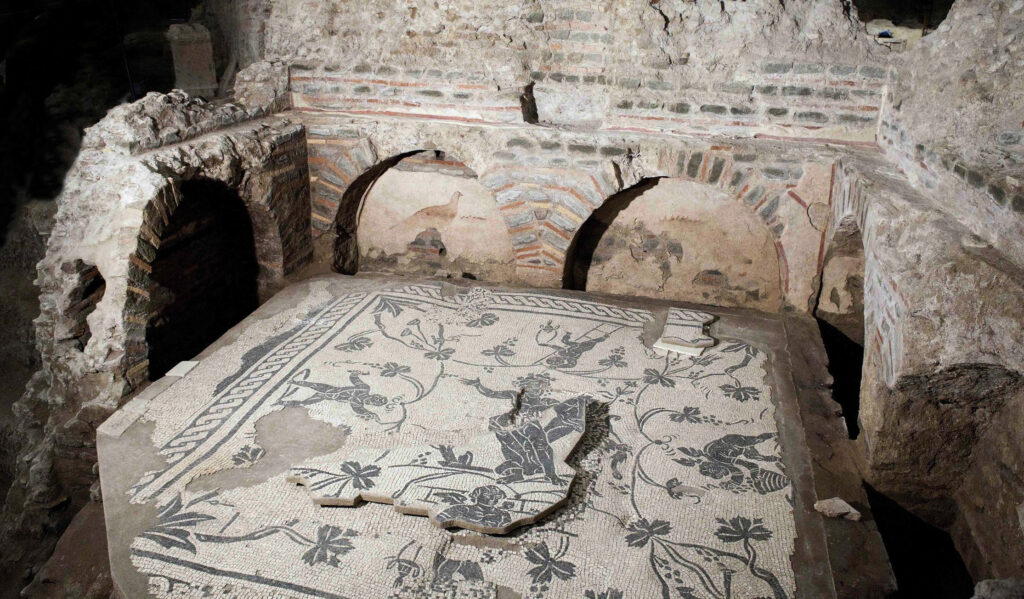
A key discovery in the Scavi was the “graffiti wall” containing an inscription that reads, Petros eni (Peter is here), which many believe points to St. Peter’s final resting place. Furthermore, the Trophy of Gaius — an early Christian monument that dates back to the second century and was built over what was believed to be St. Peter’s tomb — was uncovered here. Referenced by early Christian writers, it serves as a significant piece of evidence in support of the location of Peter’s burial site.
It is here, to the tomb of Peter — to whom Jesus gave the keys to the kingdom of heaven (Mt 16:19) — that Christians have come for 19 centuries to venerate the prince of the apostles.
Santa Maria alla Via Lata
As determined shoppers looking for the latest Italian fashions dart up and down the bustling Via del Corso, few are aware of the treasure hidden under their feet. Tradition holds that beneath the Church of Santa Maria alla Via Lata was the house of St. Luke, where St. Paul was living during his house arrest, referenced in Acts 28:30- 31: “He lived there two whole years at his own expense and welcomed all who came to him, proclaiming the kingdom of God and teaching about the Lord Jesus Christ with all boldness and without hindrance.”
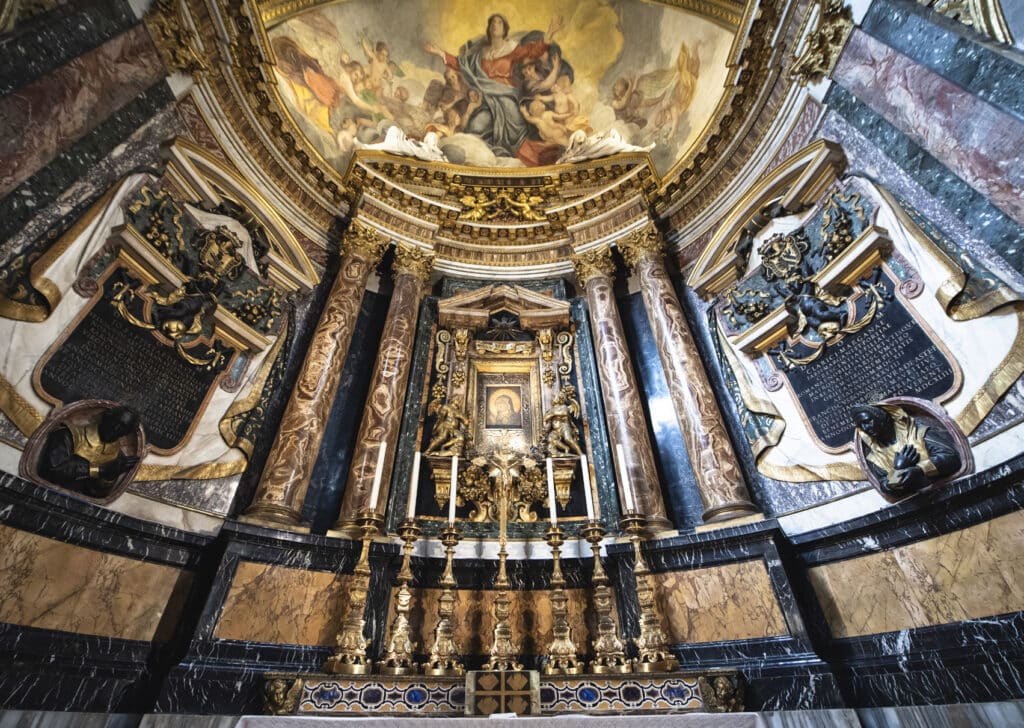
Descending from the noisy street down the narrow staircase, pilgrims encounter remnants of ancient walls believed to have once imprisoned St. Paul himself. A small well in the underground chamber is said to have provided water to the great saint. It is most probable that he wrote his captivity letters to the Philippians and Colossians here, including the words, “Rejoice in the Lord always; again I will say, Rejoice” (Phil 4:4).
The presence of early Christian Latin inscriptions and biblical symbols on the damp stone walls, like the Chi-Rho and the fish, testify to the belief of early visitors in the words of the Lord to St. Paul, “Keep up your courage! For just as you have testified for me in Jerusalem, so you must bear witness also in Rome” (Acts 23:11).
Capuchin Crypt
Nestled beneath the Church of Santa Maria della Concezione dei Cappuccini on Rome’s fashionable Via Veneto is a surreal and sobering sacred space that offers a profound meditation on the transient nature of life on earth and the promise of eternal life with God. Here, the earthly remains of Capuchin friars are arranged into intricate artistic displays that serve as stark yet grace-filled reminders of mortality.
The dim corridors, walls, ceilings and even chandeliers are adorned with the bones of more than 4,000 Capuchin monks that seem to echo the words of Scripture: “Remember your creator in the days of your youth” (Eccl 12:1), and, “you are dust, and to dust you shall return” (Gn 3:19). The friars who created these solemn chapels sought not to provoke fear, but to inspire an examined life grounded in repentance and trust in God.
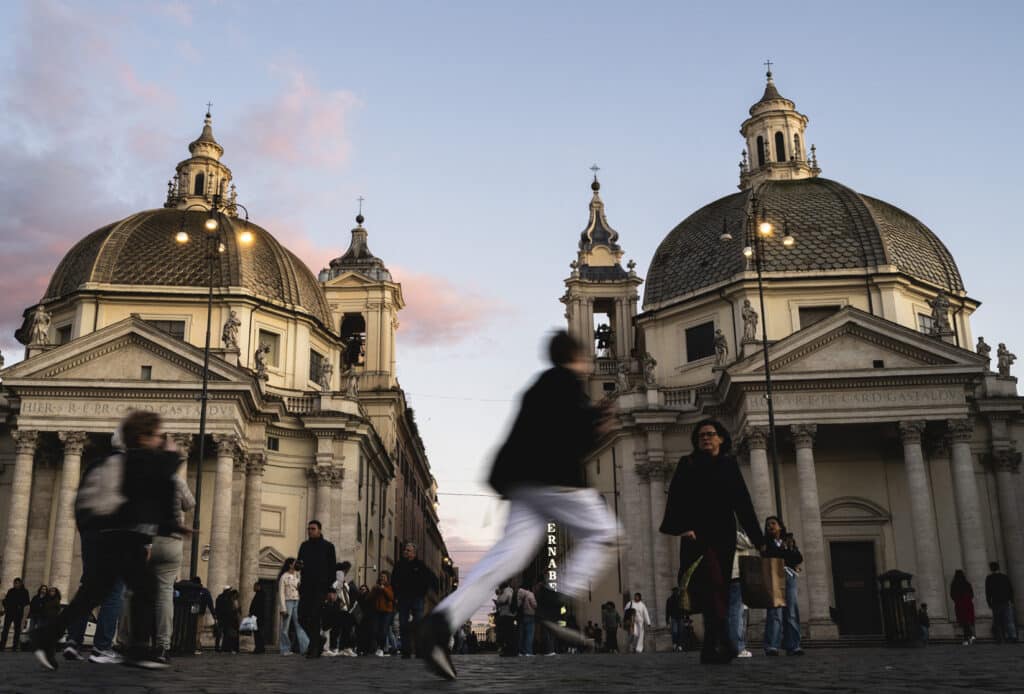
The space consists of six small chapels, each uniquely decorated with bones arranged into artistic designs such as floral patterns, crosses and even coats of arms. The Crypt of Skulls features walls made entirely of skulls, stacked meticulously to form symmetrical patterns. In the Crypt of Pelvises and Leg Bones, the bones are arranged in geometric and ornamental designs. The Crypt of the Resurrection features a striking fresco of Jesus raising Lazarus from the dead, surrounded by skeletal decorations. The Crypt of the Three Skeletons is the most famous chamber, where a skeleton holding a scythe and scales (symbols of death and judgment) is displayed within an oval of bones.
All serve as a chilling memento mori, inviting reflection on the Christian understanding of death as a passage to eternal life.
The alluring pomegranate
In Greek myth, the goddess Persephone bound herself in marriage to her captor, Hades, the god of the underworld, by eating six seeds of the pomegranate. Thus the fruit was associated with both marriage and death.
In Christian tradition, the pomegranate symbolizes the unity of the Church, the Resurrection and eternal life. Its many seeds enclosed within a single fruit evoke the words of St. Paul: “For just as the body is one and has many members, and all the members of the body, though many, are one body, so it is with Christ” (1 Cor 12:12). Each seed represents the faithful, united in the one body of Christ with diverse gifts and callings.
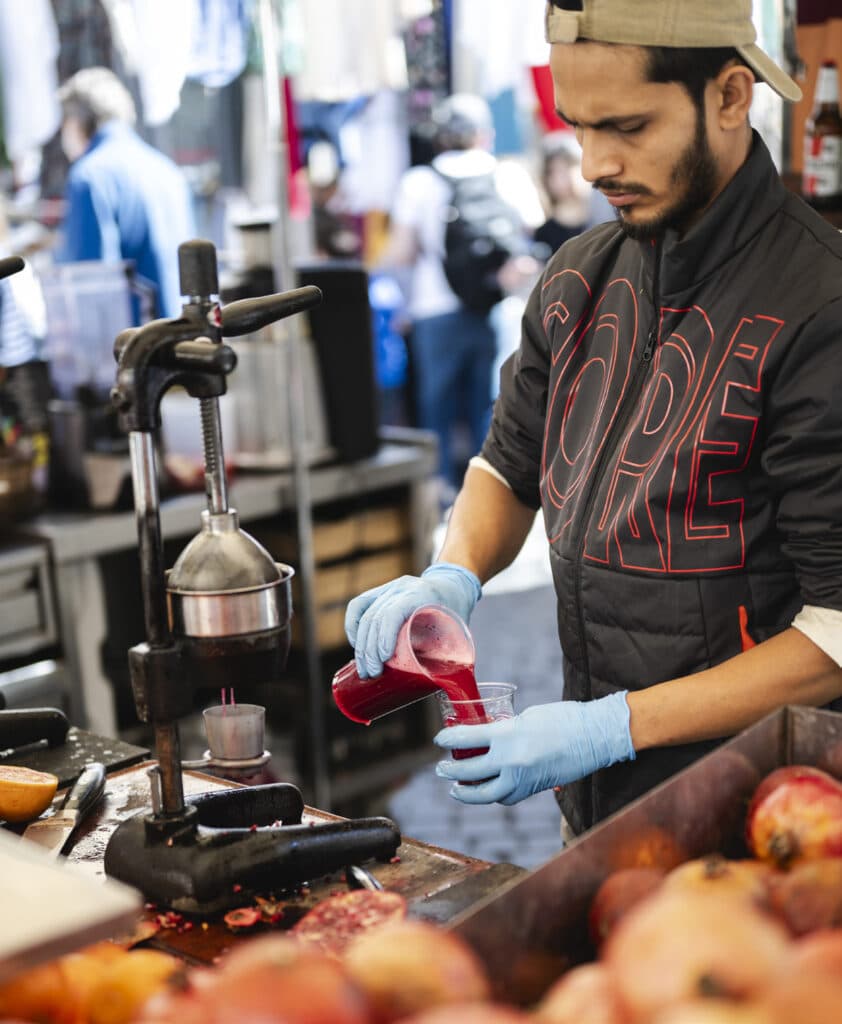
Those seeds — white but covered in red pulp — also symbolize the soul cleansed by the blood of Christ. Pomegranates decorate some tombs in the Vatican Necropolis and appear in frescoes in the Catacombs of San Callisto and Domitilla as symbols of eternal salvation.
Today, the fruit is associated with health, as tourists and locals drink pomegranate juice for its antioxidants. Grab a glass in the bustling market at Campo de’ Fiori!

